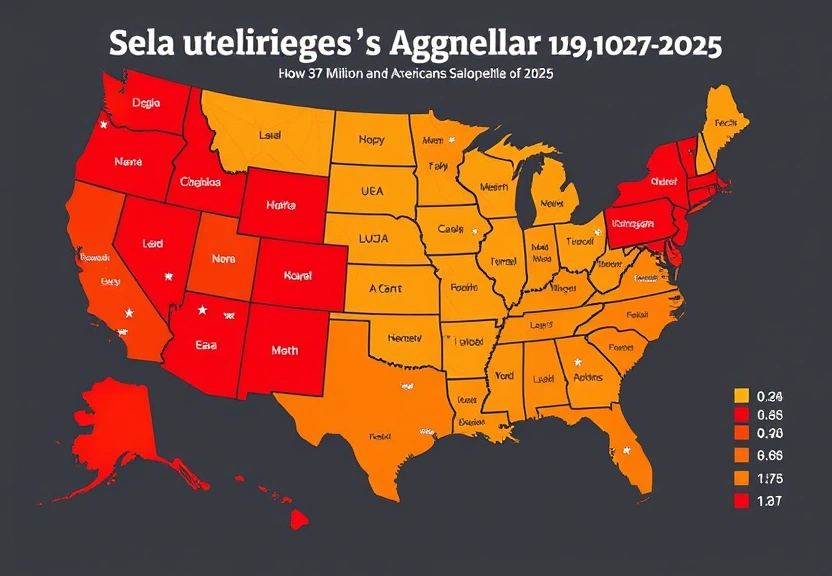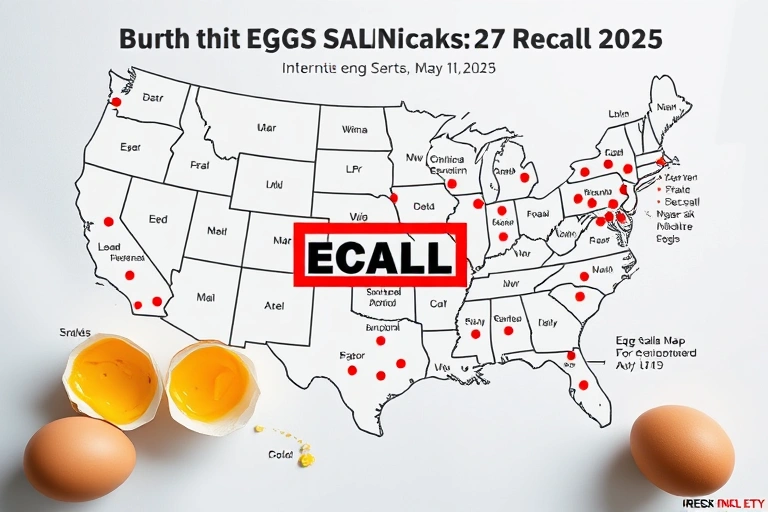Urgent Egg Recall Map: How 37 Million Americans Are at Risk from the Deadliest Salmonella Outbreak of 2025
Introduction
In 2025, the United States is facing an alarming public health crisis due to the deadliest salmonella outbreak in recent history. With over 37 million Americans potentially affected, the urgency to address this situation cannot be overstated. The egg recall of 2025 has sent shockwaves through communities, urging citizens to stay informed and vigilant about food safety. This article aims to provide a comprehensive overview of the current salmonella outbreak risk, the egg contamination map, and essential salmonella prevention tips to mitigate health risks.

Development Principal
Salmonella is a bacterium that can cause serious gastrointestinal illness in humans, and its presence in eggs can lead to severe health consequences. The Centers for Disease Control and Prevention (CDC) has issued multiple public health warnings regarding the ongoing salmonella outbreak, with the egg recall of 2025 being a significant component of these alerts. This outbreak has been linked to various brands of eggs distributed across the nation, emphasizing the need for an urgent food safety alert.
The egg contamination map highlights the regions most affected by the salmonella outbreak, showcasing the states where contaminated eggs have been reported. This map is an essential tool for consumers to identify the sources of their food and make informed choices about their purchases. The FDA and CDC are working closely to trace the origin of the contaminated eggs, and preliminary investigations suggest that specific farms are responsible for the widespread distribution of infected products.
As the egg recall of 2025 unfolds, consumers are advised to check their egg cartons for specific lot numbers and brands that have been implicated in the outbreak. The consequences of consuming contaminated eggs can be severe, especially for vulnerable populations such as the elderly, young children, and individuals with weakened immune systems. Symptoms of salmonella infection include diarrhea, fever, abdominal cramps, and vomiting, which can lead to hospitalization in extreme cases.
Analysis and Benefits
Understanding the factors leading to the salmonella outbreak risk is vital for preventing future incidents. The egg recall of 2025 serves as a critical reminder of the importance of food safety practices in the production and distribution of eggs. Farms must adhere to stringent health regulations to minimize the risk of contamination, and consumers should remain educated about safe food handling practices.
The benefits of heightened awareness surrounding this outbreak include improved public health outcomes and a greater emphasis on food safety measures. By disseminating urgent food safety alerts, health organizations can help consumers avoid contaminated products and promote safer eating habits. Furthermore, educating the public on salmonella prevention tips can significantly reduce the incidence of foodborne illnesses.
Some key salmonella prevention tips include:
- Always cook eggs thoroughly until both the white and yolk are firm.
- Avoid consuming raw or undercooked eggs, which are often found in homemade sauces, dressings, or desserts.
- Store eggs in the refrigerator at a temperature below 40°F (4°C).
- Wash hands, utensils, and surfaces thoroughly after handling raw eggs.
- Regularly check for updates on egg recalls and food safety alerts from reliable sources.
Implementation Practical
Implementing effective strategies to combat the salmonella outbreak risk requires a coordinated effort between government agencies, food producers, and consumers. The FDA and CDC are actively working to monitor the situation and facilitate the egg recall of 2025, ensuring that contaminated products are swiftly removed from store shelves.
For consumers, staying informed about the ongoing situation is crucial. Regularly consulting the egg contamination map and following public health warnings can help individuals make safer dietary choices. Additionally, grocery stores and restaurants must be proactive in communicating with their customers about any recalls and the steps they are taking to ensure food safety.
Restaurants and food service providers should also implement rigorous food safety protocols to protect their patrons. Training staff on proper egg handling and cooking techniques is essential to minimize the risk of salmonella transmission. Furthermore, businesses should conduct regular audits of their suppliers to ensure compliance with safety standards.

Frequently Asked Questions
What is the current status of the egg recall in 2025?
The egg recall of 2025 is ongoing, with numerous brands and lot numbers identified as potentially contaminated. Consumers are urged to check for updates from the FDA and CDC regarding the specific products involved in the recall.
How can I find out if my eggs are part of the recall?
To determine if your eggs are part of the recall, refer to the egg contamination map and public health alerts issued by the FDA and CDC. Check the lot numbers and brands on your egg carton against the information provided in these alerts.
What symptoms should I watch for if I suspect salmonella exposure?
If you suspect exposure to salmonella, monitor for symptoms such as diarrhea, fever, abdominal cramps, and vomiting. Symptoms typically appear six hours to six days after infection and can last between 4 to 7 days. If symptoms worsen or you experience severe dehydration, seek medical attention promptly.
Are there specific groups at higher risk for salmonella infections?
Yes, certain groups are at a higher risk for salmonella infections, including the elderly, young children, pregnant women, and individuals with weakened immune systems. It is crucial for these populations to adhere strictly to food safety guidelines to avoid exposure.
What actions are being taken to prevent future salmonella outbreaks?
Preventing future salmonella outbreaks involves a collaborative effort among government agencies, food producers, and consumers. Regulatory bodies are enforcing stricter food safety standards, enhancing inspections, and promoting public education on safe food handling practices.
Conclusion
The salmonella outbreak risk in 2025 serves as a serious wake-up call for public health and food safety. With 37 million Americans affected by the ongoing egg recall, it is vital to remain informed and proactive in mitigating health risks. By understanding the current situation, recognizing the importance of food safety, and following salmonella prevention tips, individuals can protect themselves and their families from potential harm. Continuous vigilance and adherence to food safety protocols are essential in ensuring that such outbreaks do not occur in the future.







